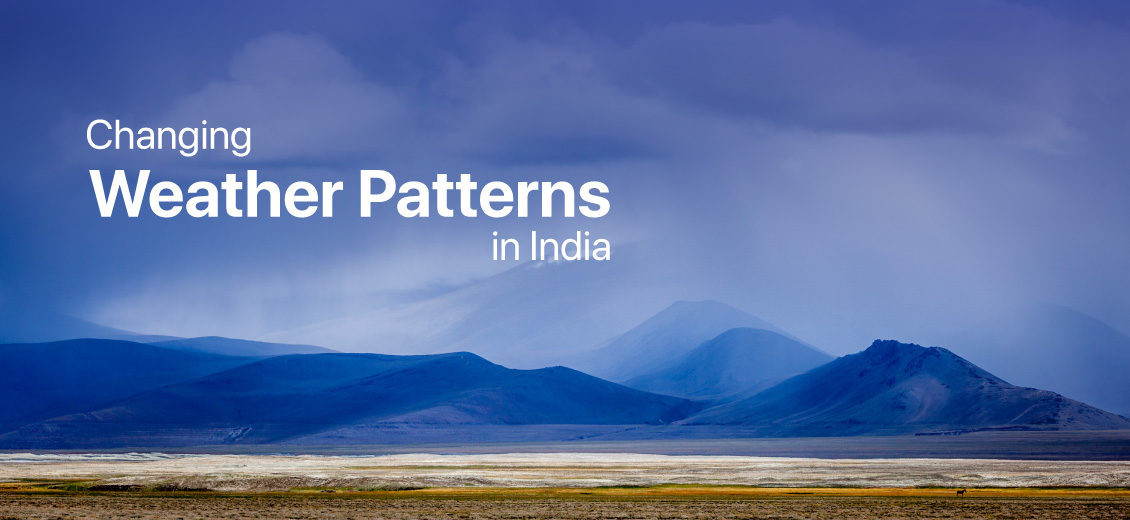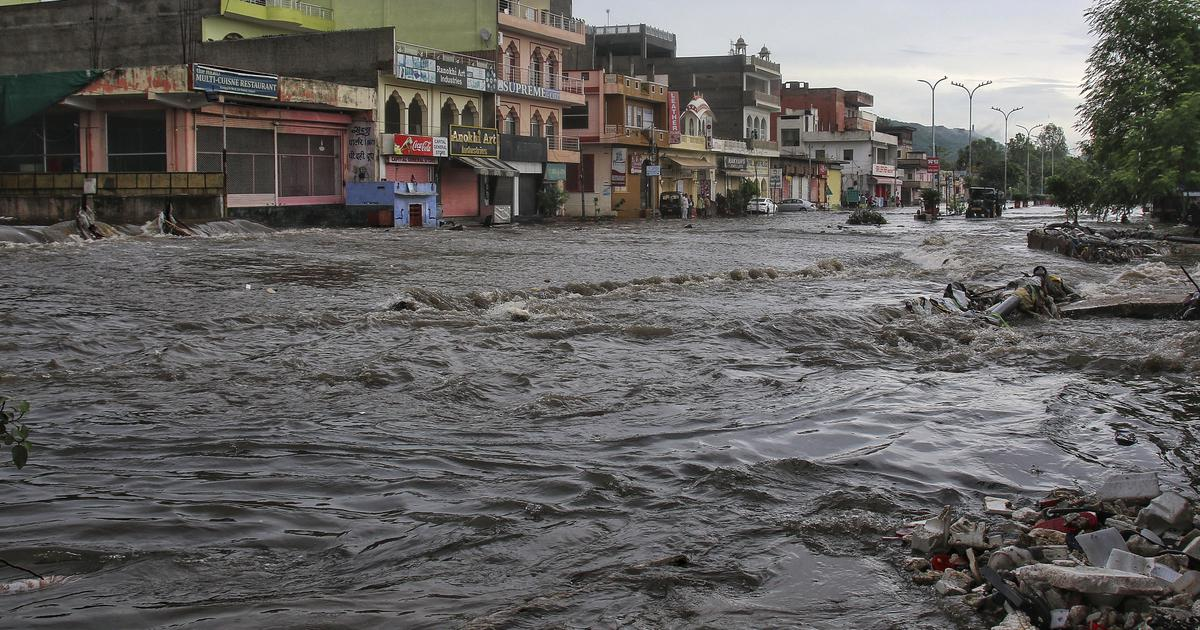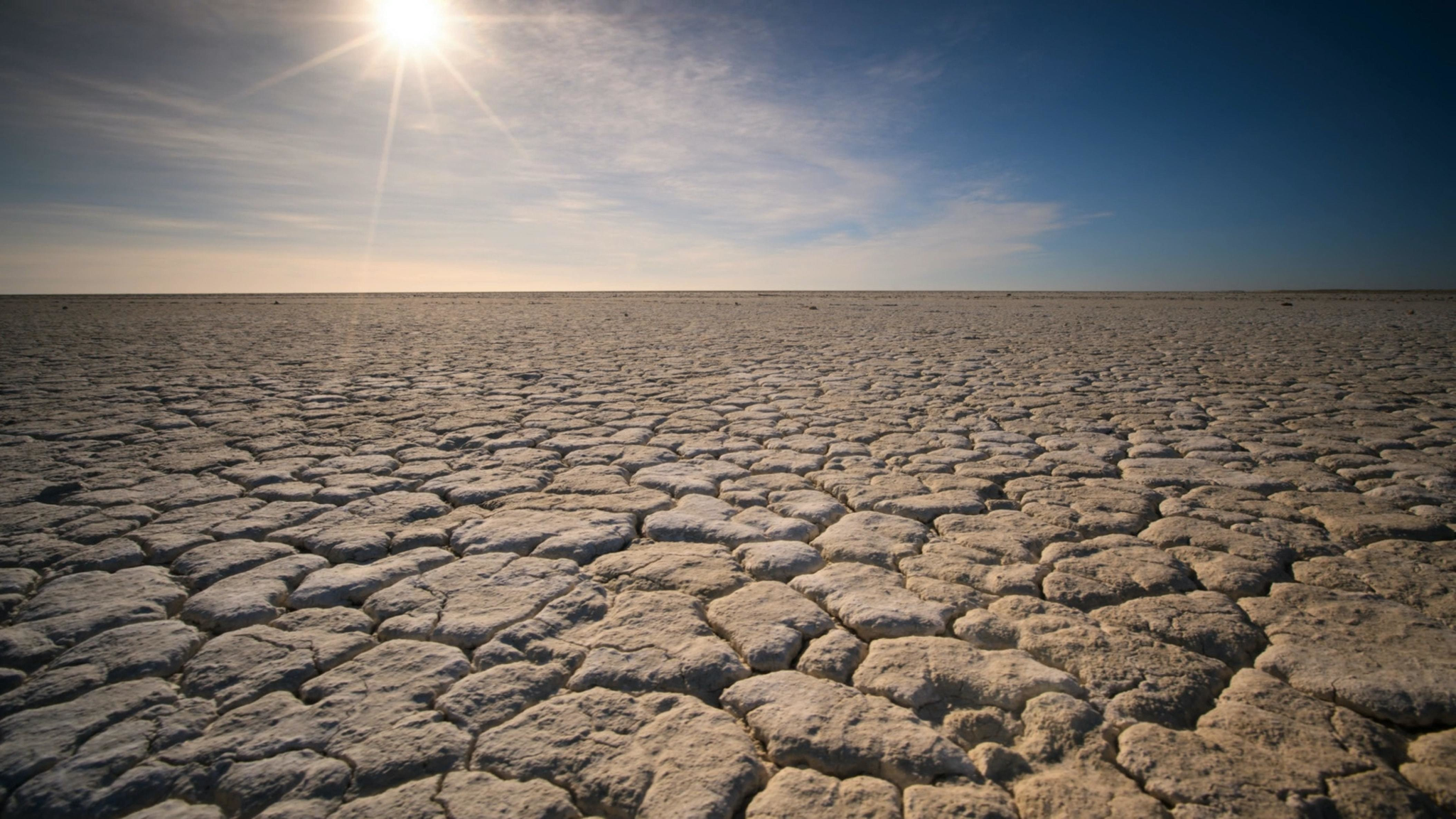Changing Weather Patterns In India
Blogs Home
- 12 Nov 2022

From extreme heat waves in Japan to devastating floods in Pakistan, the environmental challenges of today's globalised world frequently include extreme weather conditions. Most countries of the world are suffering from extreme weather patterns. India’s condition is also not so different. From the heavy rainfall in northeastern regions (Assam, Meghalaya, Arunachal Pradesh, Tripura) to heat waves and simultaneous droughts in Central India, we can observe the changing weather conditions. These all-natural disasters are directly associated with the climate. Avalanches, cyclones, droughts, floods, and landslides are the greatest threats to human life and belongings. Continual dust storms in the summer season and hailing are also the major causes of damaging the crops and the property.
Climate change is considered by the World Health Organization (WHO) as the biggest threat to world health in the twenty-first century. Even if efforts are effective in reducing rising temperatures, some consequences will last for generations. Increased Sea levels and temperature, making oceans more acidic, are two examples of this. Desserts are expanding due to climate change, and heat waves and wildfires are also occurring more frequently. Arctic ice melting, glacier retreat, and a reduction in sea ice have all been impacted by increased heat in the Arctic. Storms, droughts, and other extreme climates are becoming more intense as a result of rising temperatures. Numerous species are being forced to move or go extinct due to the rapid environmental change occurring in the Arctic, coral reefs, and mountains.
Major Causes of Weather Change
According to studies, the weather is now changing more rapidly compared to previous geologic records. These weather changes are happening due to climate change. Current climate change involves both the effects of global warming on the planet's weather patterns. The recent rise in the average global temperature is more pronounced and is primarily due to human activities. Carbon dioxide (CO2) and methane (CH4) are the two main greenhouse gases that are released into the atmosphere when fossil fuels are burned. Agriculture, industrial operations, and forest loss have smaller impacts. Greenhouse gases heat the air by absorbing the heat that the Earth radiates and keeping it close to the surface. This impact is increased by greenhouse gas emissions, which result in the Earth absorbing more solar energy than it can emit back into space.
Vegetation patterns and climate are strongly related on a global scale. As CO2 is absorbed by vegetation, some of the impacts of global warming can be masked. Conversely, the loss of vegetation causes desertification, which increases global warming by releasing CO2. Deforestation, for instance, tends to enhance local albedo (reflectivity) and causes surface cooling by reducing vegetation cover. Albedo is the amount of light a surface reflects instead of absorbs. Light surfaces generally have a high albedo, while dark surfaces often have a low albedo. Snow-covered ice has a high albedo and reflects about 90% of solar light.
As a result of these practices and natural phenomena, India is facing a shift in its general weather pattern. Some of these changes have been discussed below.
Changing Rainfall Patterns
On the closing day of the 2022 monsoon season, the India Meteorological Department (IMD) reported that rainfall was 6% above average from June 1 to September 30, 2022. As a result, this season's rainfall was 6.49 percent higher. Jharkhand, Bihar, Uttar Pradesh, Uttarakhand, Assam, Haryana, Delhi, and Punjab are among the states that had relatively little precipitation. Insufficient rainfall was recorded in many districts of Jharkhand, Bihar, Uttar Pradesh, and Punjab. Heavy rains in the states other than Jharkhand and Bihar during the final week of September caused the figures to fluctuate dramatically. According to Lok Sabha data, 1,098 fatalities related to hydro-meteorological disasters, including landslides, flash floods, and cloudbursts, were reported by the states and union territories up until July 17, 2022.
Nearly the entire country of India is susceptible to flooding. In the past few decades, events of extreme precipitation like flash floods and torrential rains have frequented Central India at the same time that global temperatures have risen.
As a result of a decreased monsoon circulation brought on by the rapid warming of the Indian Ocean and a smaller land-sea temperature differential, the yearly precipitation totals have been steadily declining. This indicates that over central India, more extreme rainfall events have been occurring recently, interspersed with longer dry spells.
The Indian Meteorological Department has predicted that the water cycle will be more intense, with future years witnessing both drought and higher annual average rainfall. Over most states, a 20% increase in monsoon is also a forecast. The Indian monsoon will become highly unpredictable with a 2°C increase in the global average temperature. By 2100, an exceptionally wet monsoon, which now has the possibility of occurring once every 100 years at 4°C, will happen once every ten years. The temperature and precipitation extremes will rise along the coastal belt and central and northeast India. Due to climate change, it is anticipated that dry years will be hotter and wet years will be wetter.
Droughts and Extreme Heat Waves
In India, the summers have already become hotter, with some parts routinely recording temperatures around 47°C. According to data released by the Ministry of Earth Sciences, Government of India, over 4,620 deaths in India in the previous four years have been attributed to heat waves. According to the India Meteorological Department, the strong storm that struck northern India in May 2018 was caused by global warming, and its frequency may rise. This is brought on by an increase in wind speed and soil dryness, both of which heighten the severity of dust storms.
India saw its hottest March in 122 years, this year, as a result of the extended heat wave. With 71% less rain in India, the month was likewise unusually dry. By the end of April 2022, 70% of India had been affected by the hot, dry weather that had persisted all month. May also didn’t offer any relief. Up until September 21, there was 18% less rainfall than usual. Punjab had a 21% reduction in rainfall compared to the average.
In the northern region of India, the increase in ground surface temperature would be more noticeable. According to a recent study, if the global temperature rises by more than 2°C, summers could persist for up to 8 months in the Gangetic Plain by 2070. Heat waves that are more intense and frequent have the potential to significantly raise mortality and death rates. Drought effects are made worse by warmer circumstances, water scarcity, and other factors.
Impacts of Weather Change
India's economy and growth are badly impacted by a poor monsoon season. India's $3 trillion economy, which is reliant on agriculture, depends on the monsoon, which provides nearly 75% of the nation's annual rainfall.
Since the unpredictable monsoon is likely to reduce the output of summer crops, food prices, particularly for rice, pulses, and vegetables, are likely to increase. This is acknowledged by trade, industry, and government officials.
The risk of heavy rainfall and flash floods is substantially rising across the nation. Numerous risks result from it, including flooding, which puts human lives in danger, topples buildings and infrastructure, and also results in the loss of crops and livestock. Landslides endanger human lives, interfere with travel and communications, and harm buildings and infrastructure.
Important summer crops like rice, soybeans, cotton, pulses, and vegetables have been destroyed by heavy rain in India just before harvest, which might fuel food inflation in Asia's third-largest economy.
On the other hand, India's agriculture was also severely harmed by the heatwave. Unfavorable monsoon conditions decrease demand for FMCG products, tractors, and rural housing. Additionally, it forces the implementation of programs like the waiver of farm loan payments and spending on food imports by the government.
Meanwhile, early rainfall in India was 71% below average. In certain areas, up to 30% of the harvest was lost in Punjab, the state that produces most of India's crops. Due to the heat wave's increased demand, India has experienced its biggest electricity shortage. High temperatures cause early school dismissals and keep people inside. Due to an increase in the amount of power used for cooling, Rajasthan, Gujarat, and Andhra Pradesh have all decreased the amount of power allocated to the industry.
India's primary source of electricity generation, coal, is now more in demand due to the country's increasing power consumption. Coal India, a government-run company, increased its output by 27%. To prioritize transporting coal to coal power plants and prevent blackouts, Indian Railways had to cancel hundreds of passenger trains. Additionally, the state asked for 19 million tonnes of coal to be imported by electrical suppliers before the end of June.
Solutions
“The climate crisis is both the easiest and the hardest issue we have ever faced.
The easiest because we know what we must do.
We must stop the emissions of greenhouse gases.
The hardest because our current economics are still totally dependent on burning fossil fuels,
and thereby destroying ecosystems in order to create everlasting economic growth.”
— Greta Thunberg
The reduction of greenhouse gas emissions, which must reach zero as soon as possible, is the foundation of all climate change solutions. Eliminating the usage of coal, oil, and, eventually, natural gas is the first task. The second largest contributor to greenhouse gas emissions is transportation. Taking public transportation, or switching to a mode of transportation that only uses human energy, like walking or cycling, are all effective ways to significantly reduce the need for transportation fuel. A large portion of emissions might be easily eliminated through improved agricultural practices, paper recycling, and forest management, which balances the amount of wood harvested with the number of new trees growing. Increasing the natural capacity of trees to absorb carbon dioxide can help stop global warming because both play crucial roles in controlling our climate.
Conclusion
Nearly every element of our lives is impacted by the climate, including our food supplies, transportation systems, clothing choices, and vacation destinations. It significantly affects our future, our health, and our means of subsistence. Undoubtedly, climate change is one of the biggest challenges that humanity is facing today, and changing weather patterns is one of the major effects of climate change, but it’s never too late. Even if we work together at individual, community, and organizational levels, we can reduce or reverse the phenomenon of frequent extreme weather.
In the end, I would like to conclude by saying that now our collective focus should not be just limited to creating awareness campaigns but to converting these campaigns into actions.

Arifa Nadeem
Aarifa Nadeem is from Jhansi, UP. She has qualified UGC NET in Tourism Administration & Management and is currently pursuing her Ph.D. in Tourism from Bundelkhand University, Jhansi.
Sources
https://www.bgs.ac.uk/discovering-geology/climate-change/what-causes-the-earths-climate-to-change/
https://earth.org/greta-thunberg-quotes-speeches-to-inspire-climate-action/







